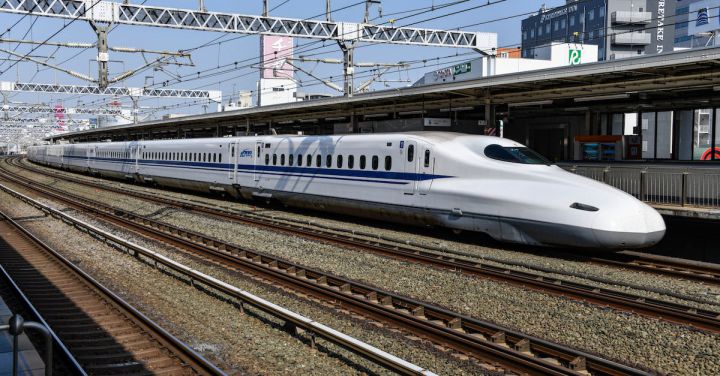In a world where time is of the essence, speed and efficiency have become paramount. The Shinkansen, also known as the bullet train, has revolutionized the way people travel in Japan. With its sleek design and impressive speed, it has become an iconic symbol of modern transportation. But what is the secret behind its success?
First introduced in 1964, the Shinkansen was a game-changer in the railway industry. It offered a new level of comfort and speed that was unheard of at the time. With trains reaching speeds of up to 320 kilometers per hour, it quickly became the preferred mode of transportation for both business and leisure travelers.
One of the key factors contributing to the Shinkansen’s success is its advanced technology. The trains are equipped with state-of-the-art control systems that allow for smooth and safe operations. The use of advanced sensors and computer systems ensures that the trains maintain their high speeds while ensuring passenger safety.
The Shinkansen also benefits from its dedicated tracks, which are designed to minimize noise and vibration. This not only improves the overall travel experience but also reduces the impact on the surrounding environment. The tracks are also designed to withstand earthquakes, a common occurrence in Japan, further enhancing the safety and reliability of the system.
Another important aspect of the Shinkansen’s success is its punctuality. The trains are known for their strict adherence to schedules, with average delays of less than one minute. This level of punctuality is achieved through meticulous planning and efficient operations. The trains are constantly monitored to ensure that they are running on time, and any delays are quickly addressed to minimize disruptions to the schedule.
In addition to its technical advancements, the Shinkansen also places a strong emphasis on customer service. The trains are known for their cleanliness and comfort, with spacious seating and ample legroom. The onboard staff is highly trained and provides excellent service to passengers, ensuring a pleasant and enjoyable journey.
The success of the Shinkansen has not only been limited to Japan. The technology and expertise developed through its construction and operation have been shared with other countries around the world. The concept of high-speed rail has been adopted in countries such as France, China, and Taiwan, further expanding the reach of this revolutionary mode of transportation.
The Shinkansen has also had a significant impact on the local economies it serves. The high-speed rail connections have facilitated faster and more efficient travel, allowing for increased business and tourism opportunities. The improved connectivity has led to the development of new industries and the revitalization of rural areas along the train lines.
Looking to the future, the Shinkansen continues to innovate and improve. Plans are already underway for the next generation of bullet trains, which are expected to be even faster and more energy-efficient. These advancements will further solidify the Shinkansen’s position as a pioneer in high-speed rail technology.
In conclusion, the success of the Shinkansen can be attributed to a combination of advanced technology, efficient operations, and a strong focus on customer service. Its impact on transportation, both in Japan and around the world, cannot be overstated. As we look to the future, the Shinkansen’s legacy will undoubtedly continue to inspire and shape the future of transportation.
